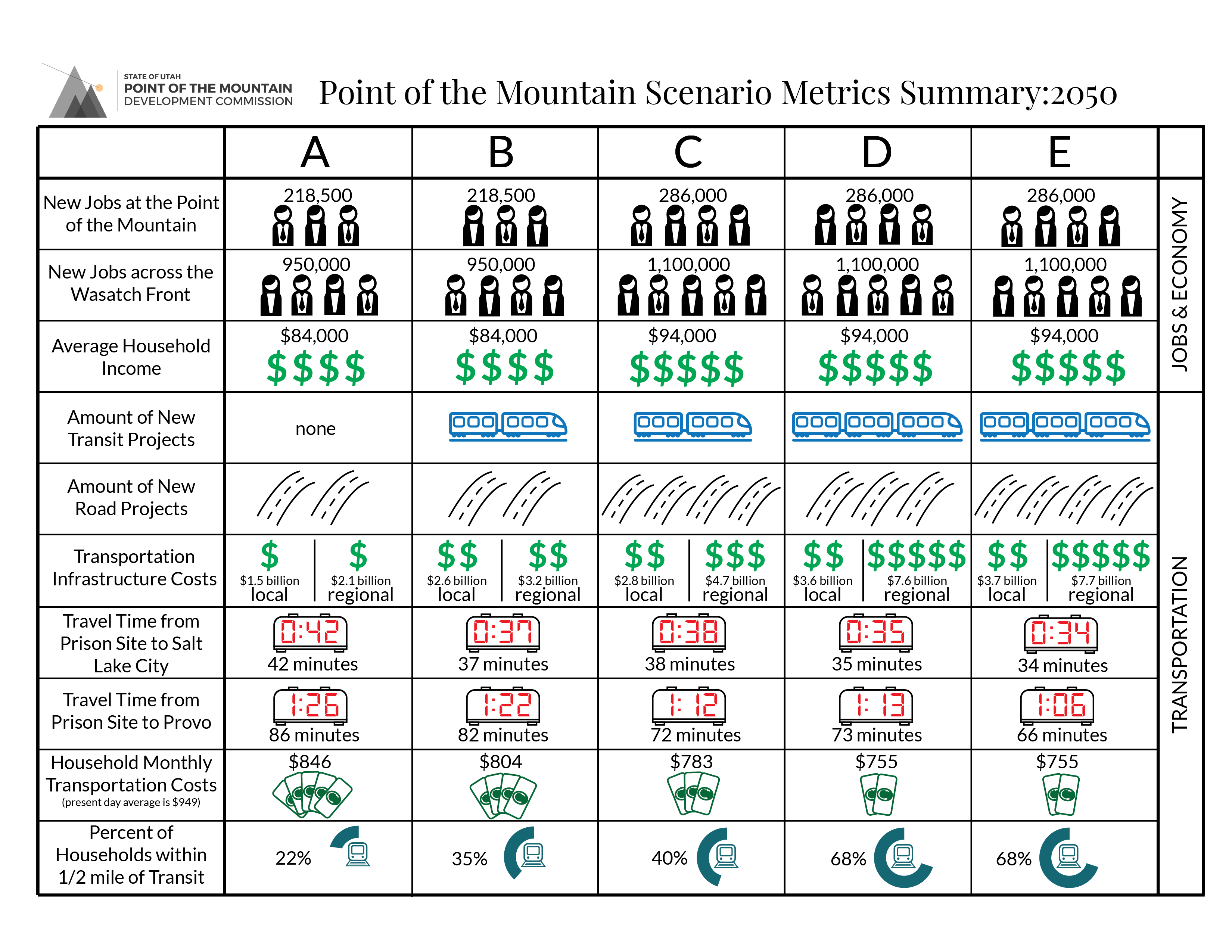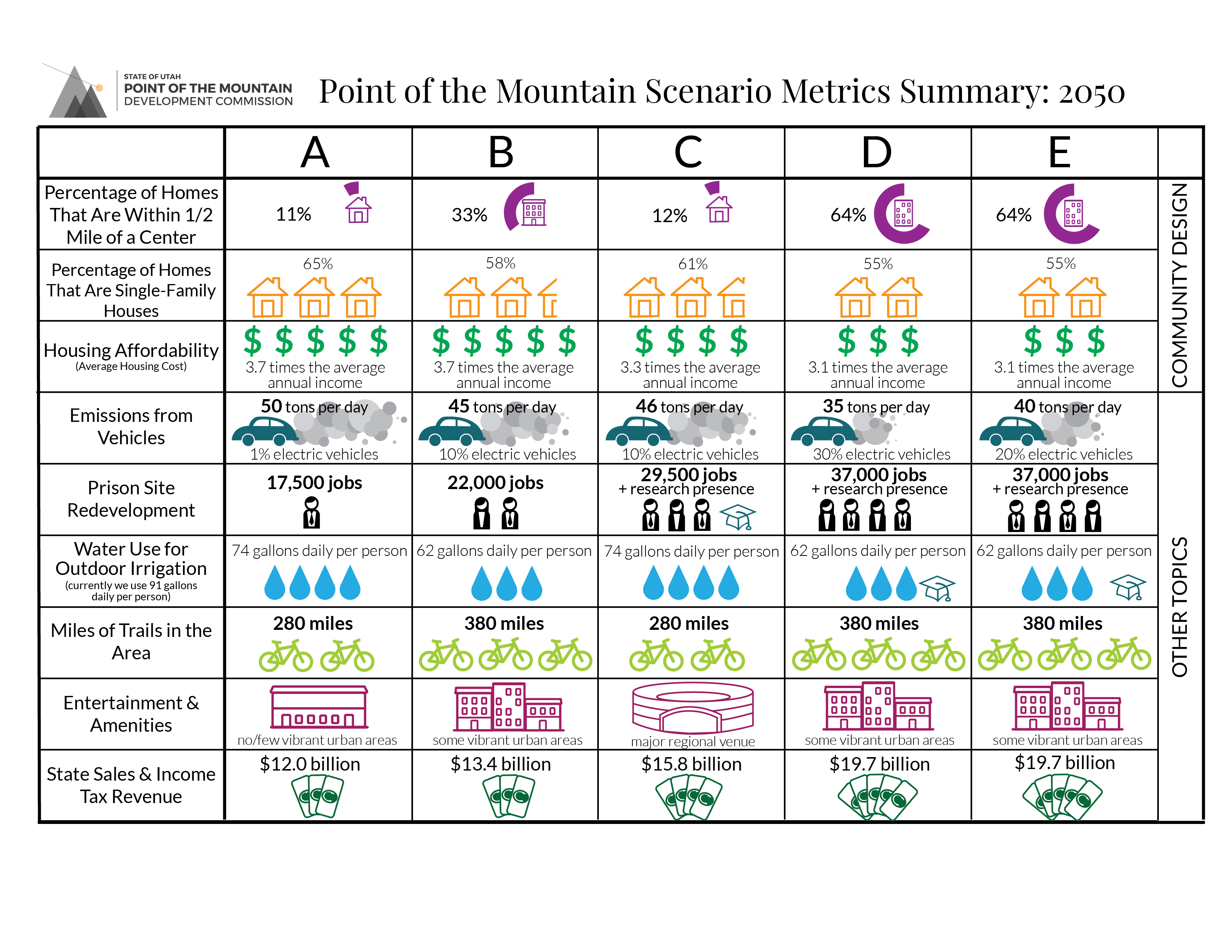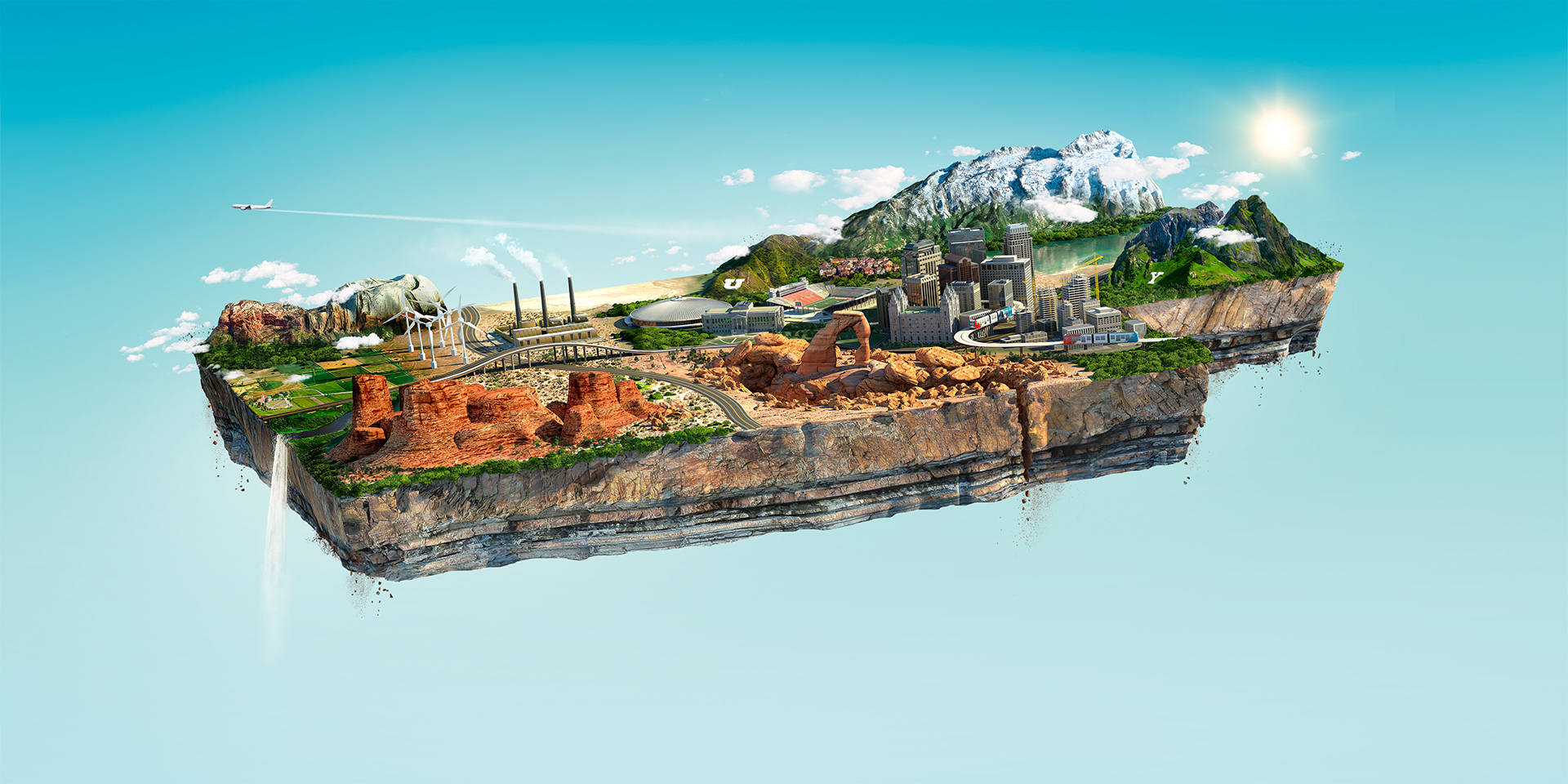The Story
Large open spaces are preserved in the East and West Traverse Mountains and along the Jordan River. Additional wildlife connections between the Wasatch and Oquirrh Mountains better facilitate wildlife movement between the ranges and to the Jordan River.
Green infrastructure practices are used to manage storm water runoff, reducing pollutants flowing into the Jordan River. These practices might include using vegetated channels (bioswales) to remove pollutants from storm water runoff, permeable pavements for roads and driveways to allow storm water to soak through the ground and avoid picking up pollutants from paved surfaces, and green parking lot designs that allow storm water to infiltrate the ground while also making parking lots more pleasant to walk and drive in.
Only about a quarter of landscaping in yards is lawn, with the remainder being traditional northern Utah plants or non-irrigated paths or patios.

Results
- Water use for outdoor irrigation in the new development is 62 gallons per person per day, as compared to 91 today in Salt Lake and Utah counties. The reduction is due to smaller lots, more townhomes and apartments, and more waterwise landscaping.





